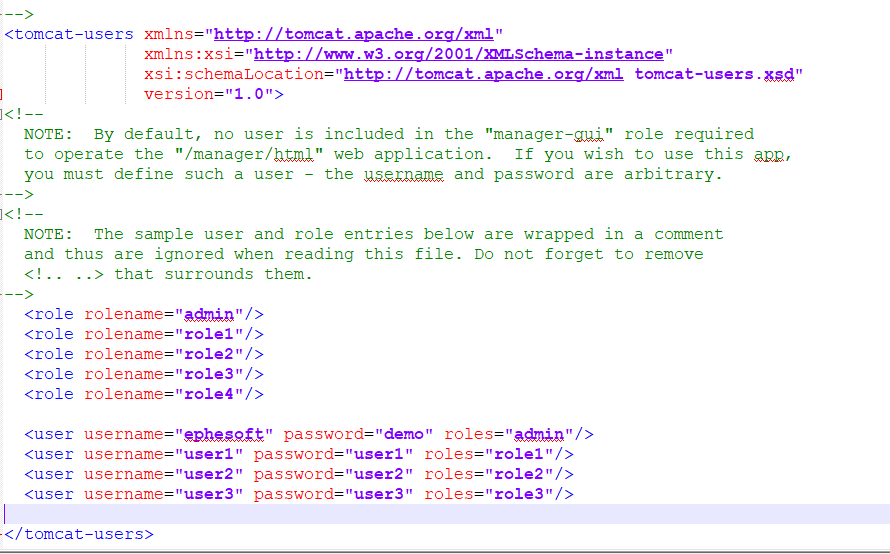Default authentication method in Transact
By default, Transact uses Tomcat for authentication. This is the most basic method of verifying and validating users, which is done with the tomcat-users.xml file. In this file, you can define roles and users, and you can assign users with specific roles.

Once Tomcat is started, the server.xml file references the tomcat-users.xml file in the following resource:

Tomcat stores users, roles, and user-role mappings in the memory. These memory locations are referenced when the user sends a request to authenticate users.
If you change entries in these files, you must restart the Transact server or Tomcat instance so the new data can be loaded into memory.
